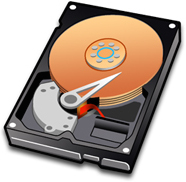 In computing terms, the term “boot” means to start a computer up from cold. When a computer is initially powered on, commands in the computer’s ROM are automatically executed that instruct the computer to load the boot program into memory and execute its instructions. These instructions are a very basic set of commands that define and enable the computer to perform some basic input / output instructions. Once the boot program has executed the operating system is then automatically loaded into memory and executed. Much of the boot and operating system instructions remain in memory continuously while the machine is in operation.
In computing terms, the term “boot” means to start a computer up from cold. When a computer is initially powered on, commands in the computer’s ROM are automatically executed that instruct the computer to load the boot program into memory and execute its instructions. These instructions are a very basic set of commands that define and enable the computer to perform some basic input / output instructions. Once the boot program has executed the operating system is then automatically loaded into memory and executed. Much of the boot and operating system instructions remain in memory continuously while the machine is in operation.
The location of the boot program can vary. Traditionally when a computer is booted from a hard disk the ROM instructs the computer to read a sector of data from the hard drive located at C:H:S 0:0:1 (Cylinder 0, Head 0, Sector 1), but the boot program can also be read from a floppy drive or CD-ROM disk instead by instructing the computer to do so in the computer’s BIOS setup.
The very first PC computer viruses were boot sector viruses. They worked by inserting code into the boot sector (usually a jump [JMP] instruction) that sent the computer to a different area of the hard drive where the virus was located and loaded into memory before returning back to the boot sector and executing the rest of the boot program. Read about the first PC computer virus known as Brain here: http://en.wikipedia.org/wiki/Brain_%28computer_virus%29
When computer viruses first appeared in the late 1980’s many people thought them a myth – how could a computer get a virus? But really a computer virus was a simple concept that exploited operating system subroutines known as Interrupts. Popular interrupts often exploited by viruses were Int13h – the hard drive interrupt, Int21h – the DOS interrupt and Int2Fh – the multiplex interrupt.
